ASC 606 Takes Effect in One Year: Are You Ready?
The winds of accounting standards are changing, and public companies now have a new requirement in place for the way they recognize revenue from contracts. The next reports they file will need to account for the new standards in their next financial reports.
For private companies, the year may be one year later. But many organizations have found this to be more challenging than the average accounting standard change—because ASC 606 affects nearly every department, every process, and every contract you have. This is why it’s so important to get started now—companies who have already made the shift have found many unforeseen challenges in making the transition, most notably driven by internal revenue considerations, new disclosure requirements, concept and impact of revenue allocation, timing of the adoption, and issues pertaining to recognizing revenue in advance of billing.
Today, we would like to share with you a brief look at the new standard and links to learn more about each step of the revenue recognition process, as well as some highly rated resources to learn more about making the shift.
The ASC 606 Standard changes the way companies look at contracts. No matter the industry, no matter the focus, if you have contracts, you will need to make some kind of changes. Below, you will find overviews of challenges, changes, and each of the five steps with links to learn more.
How Will ASC 606 Affect Each Industry?
The new Revenue Recognition Standards (ASC 606/IFRS 15) were jointly announced by the Financial Accounting Standards Board and International Accounting Standards Board in May 2014, and after comments, effective dates were set: Companies are to officially move to the new standards for annual reporting periods beginning after December 15, 2017 for public companies and annual reporting periods after December 15, 2018 for private companies.
While the goal is to simplify, simplification means different changes for different industries, all of whom have different business processes. We explored some of the major changes to each industry in a recent blog, and offered an in-depth look at challenges for healthcare providers here.
ASC 606 Step-by-Step
Some of our most popular blogs this year were those which highlighted each step of the new revenue recognition process. With each blog spanning over 1,000 words apiece, these are each some great resources for understanding how to tackle the new process.
Step 1: Identify Contracts with a Customer
Biggest Impact on Companies in the Following Industries: Aerospace and Defense, Healthcare, Licensors (Media, Life Sciences, Franchisors), Real Estate, according to KPMG.
In the multi-step process that is revenue recognition, each step has many sub-steps that need to be completed. The first step revolves around the creation and determination of contracts, the materiality of the contract, the collectability threshold, and other considerations on contract combinations and modifications. Learn more about step 1 here.
Step 2: Identify Performance Obligations
Biggest Impacts: Aerospace and Defense, Licensors, Real Estate, Software, Telecommunications
Step 2 is a complicated one and one that requires a lot of thought and a lot of modifications to processes. As defined in 606-10-05-4, identifying performance obligations consists of identifying distinct goods and services promised. Learn more about the text and changes here.
Step 3: Determine the Transaction Price
Biggest Impacts: Aerospace and Defense, Asset Managers, Construction, Building, Engineering, Healthcare, Licensors, Software
From variable consideration to financing components to noncash considerations, there are many pitfalls that occur in determining the transaction price that make step three a complicated one. There are many complications that could arise, including Variable Consideration, Constraining Estimates of the Variable Consideration, Financing, Noncash Consideration, and more, which we discussed in our in-depth guide to step 3 of ASC 606 here.
Step 4: Allocate the Transaction Price to the Performance Obligations in a Contract
Biggest Impacts: Software, Telecommunications
With considerations including standalone selling price, allocating discounts and variable consideration, and changes in the transaction price, there are certain pitfalls in allocating price to each obligation. Learn more about Step 4, Allocating Price to Obligation, here.
Step 5: Recognize the Revenue When (or as) the Entity Satisfies a Performance Obligation
Biggest Impact: Aerospace & Defense, Asset Managers, Construction/Building/Engineering, Manufacturers, Licensors, Real Estate, Software
The last step in the revenue recognition process is to recognize the revenue after the performance obligations are fulfilled by the supplier. Learn more about the impacts of step 5 here.
Additional Overviews
Over the past year, we have discussed the new standards in great detail. From who it affects within your organization to the dangers of noncompliance, we discussed some of the finer points of the standard in each of our introductory guides here and here.
Learn More: Sage Intacct Guides to Revenue Recognition
Now that you understand the importance of updating your business, it’s important to consider updating your processes, focuses, and software. In addition to our resources above, the following video will show you the importance of having software ready to handle the new standard.
<iframe width=”560″ height=”315″ src=”https://www.youtube.com/embed/M4uehSQTmB4″ frameborder=”0″ gesture=”media” allow=”encrypted-media” allowfullscreen></iframe>
Sage Intacct was the first to start talking about the new standard, and was the first to design for the new standard. We invite you to learn more by watching the video above, and hope you download the following resources from the company:
Six Rules for ASC 606 Readiness
The new ASC 606 revenue recognition standard goes into effect at the start of 2018 for public companies and the start of 2019 for private companies. How ready are you? In this eBook, Sage Intacct will identify six critical capabilities accounting software must now be equipped to handle and why there is significant risk in delaying implementation. You’ll also learn:
- What these new standards mandate and exactly how the new rules affect your financials
- How to evaluate your current accounting software, processes, and policies to determine whether they fit these new requirements
- Why your business people and processes will get overwhelmed with spreadsheets and long audits if your technology isn’t ready for ASC 606
Click here to download the guide.
Analyst Report: Sage Intacct Leads the Way in ASC 606 Transition
Blue Hill Research recently released its guide to ASC 606, discussing Sage Intacct’s work in helping companies transition, taking an important leadership stance in providing a first-to-market revenue recognition solution for organizations seeking to understand how best to manage “performance obligations” and event-based revenue.
Learn more in Sage Intacct Leads the Way in ASC 606 and IFRS 15 Revenue Recognition.
Webinar Series: ASC 606
Sage Intacct also discussed changes and challenges in getting ready for ASC 606 in a recent webinar series.
- Part 1: New FASB Rev Rec Standards, Actions You Should Take Now!: Well-designed compliance initiatives will require many months of planning, testing, and effort. In this webinar, you’ll get an overview of ASC 606 and IFRS 15 and learn about the groundwork you can lay to put your company in the strongest position to adopt and comply.
- Part 2: The Impending Impacts of ASC 606 on Subscription Businesses: Accelerate your preparedness by joining Sage Intacct and Tony Sondhi, a member of FASB’s EITF (Emerging Issues Task Force) and noted revenue recognition expert, to learn the specific impacts of the new standards and a recommended course of action.
- Part 3: Master Your Transition to ASC 606 and IFRS 15: In this third webinar, Sage Intacct will help you master your transition to ASC 606 and IFRS 15. If spreadsheets are part of your revenue recognition and billing processes, you are headed into a “perfect storm” of regulatory change. To adopt these new guidelines, you need a financial system that’s supports this critical transition.
Ready to learn more? Get in contact with rinehimerbaker to learn more about a free 30-day trial of Sage Intacct and how to master the transition.

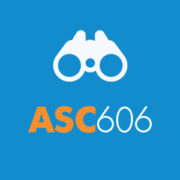
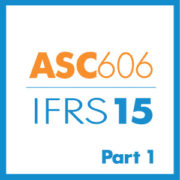
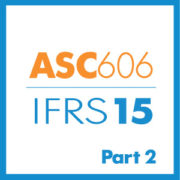
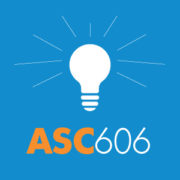
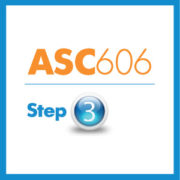



Leave a Reply
Want to join the discussion?Feel free to contribute!